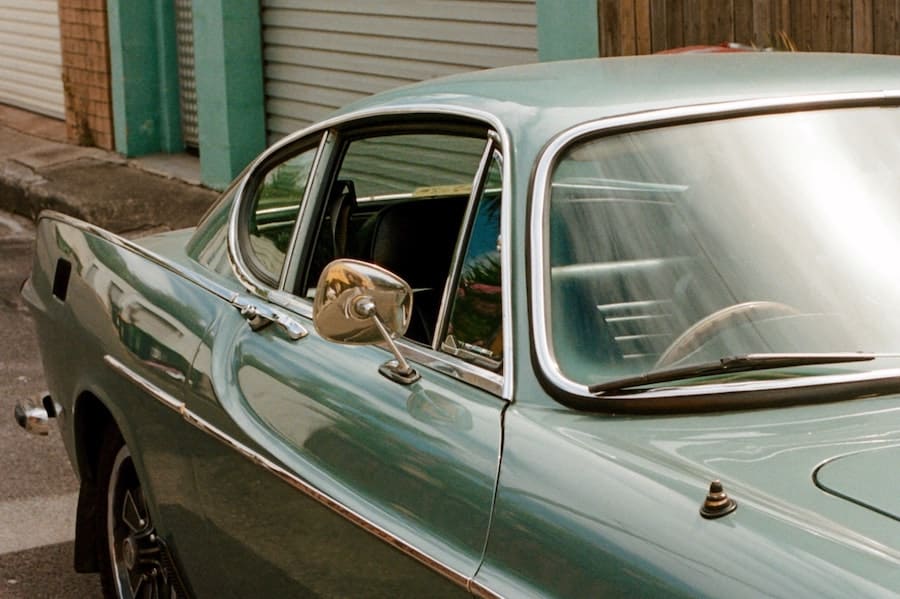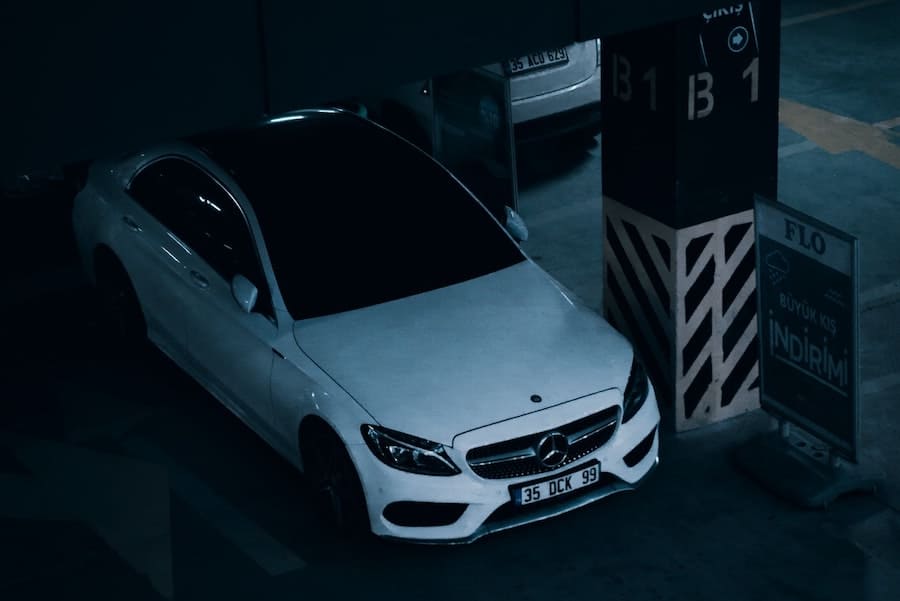As you’re driving down the street, you may have noticed one of those small security cameras hanging from a pole next to the road or a security camera perched on the corner of a building. It looks like it is aimed directly at you and your car. You start to wonder: does this camera have the power to see what is going on inside your vehicle?
Security cameras are usually able to see inside cars under different lighting conditions, but the ability of the camera to see clearly into the car depends on many factors. These factors include the type of camera, the amount of ambient light, and the type and physical properties of the glass, among others.
In this article, I’ll go through how these factors influence a camera’s ability to see into a car, as well as the science behind how cameras see through glass, particularly at night. Finally, depending on your preference, I’ll give some suggestions to help you reduce or improve the visibility of the inside of your vehicle when security cameras are present.
Why Would You Want a Security Camera to See Inside a Car? (And Why Not?)
The ability of a security camera to see inside a car can be useful in certain situations such as if you want to keep an eye on your car when it is parked in a public area or if you are concerned about suspicious activity going on inside a car parked in the street.
Another example where this capability would be useful is if a security camera is installed at an entrance or gate to monitor who is driving in and out of the premises.
Many open street parking lots and multi-level parking garages have security cameras installed at different locations to monitor for security and any illegal or inappropriate activity in the parking lot or inside vehicles.
On the other hand, this capability could also be a concern for privacy if a security camera installed on the outside of a building or business can capture footage of you or your family as you’re sitting inside your vehicle at a traffic light.
However, it is important to keep in mind that security cameras are not perfect and they may not be able to see everything that is happening inside a car even during the daytime.
Factors That Affect Security Cameras’ Ability to See Inside Cars During the Daytime

- Ambient Light: It goes without saying that for a camera to see anything during the daytime, there needs to be enough ambient light, and the light must be able to pass through the window glass to provide visibility inside. Similarly, if the car is parked in a dark garage or under a tree, the lack of light can make it difficult to see inside.
- Light Reflection: Depending on the angle of the sun and the position of the security camera, the windows may reflect the sunlight producing a glare and making it difficult or even impossible for a camera to see inside.
- Type of Glass: Privacy glass is commonly used in newer model vehicles. This glass has a dye that is added to it during manufacturing to produce a dark color. This dye will reduce the ability of light waves in the visible spectrum from passing through the window thereby reducing the visibility of the interior of the vehicle.
- Window Tinting: If the windows of the car are tinted, it will be more difficult for the security camera to see inside. Tinted windows can block out a lot of light and make it difficult for the camera to see inside. The amount of visibility blockage will depend on the window tint darkness which is measured by the percentage of light that is allowed to pass through the window and is called visible light transmission (VLT). The lower the VLT, the darker the tint. Most states allow up to 50% VLT.
- Distance From The Car: The further away the security camera is from the car, the more difficult it will be to get a good image. If the camera is too far away, the images may be blurry or distorted.
How Do Security Cameras See in the Dark?
Before we explore the factors that affect the ability of security cameras to see through a car window at night, let’s first look at how security cameras see in the dark.
Most cameras with “night vision” have infrared LED lights around the lens. When it gets dark and there is no ambient light, the IR mode is activated and the LED lights emit infrared light. This light is invisible to the human eye but is reflected off objects and back into the camera. The camera sensor can then detect the IR light and produce an image in black and white.
Can a Security Camera See Through a Glass Window Into a Car at Night?
At night, the ability of a security camera to see into a car will be different depending on the presence or absence of ambient light.
In the Presence of Ambient Light:


The ability of a security camera to see inside a car at night will depend on whether or not there is enough ambient light.
Typically, even during the night, there is some ambient light. This could be from the moon, streetlights, or even the light coming from inside a building.
If there is enough ambient light, then the camera will function in the same manner as it would during the day. The quality of the image will be determined by how much ambient light there is. In addition, the same factors as those affecting the image in daylight, namely light reflections off the windows, the type of window, the presence of window tinting, and the distance of the car from the camera, will affect how well the camera can see inside the car.
With No Ambient Light:
In the absence of ambient light, the infrared mode will be activated, and the IR LEDs will emit infrared light. For a security camera to be able to see through a window in total darkness, the infrared rays would have to pass through the window and be reflected off the interior of the car to be picked up by the camera sensor.
The million-dollar question is does infrared light pass through glass?
I’m not a physicist, so up until the time of writing this article, I couldn’t answer this question. However, I’m a physician by training, so I put on my thinking hat and did some research. I read multiple articles and sections from physics textbooks and physics forums and this is what I was able to find out.
The short answer is infrared light, particularly in the wavelength that is used for night vision in security cameras, can pass through clear white glass windows used in cars.
If you want to do a quick experiment to test that IR light does pass through glass at home, hold your TV remote control behind a clear glass door or inside an inverted glass cup and point the remote towards your TV. Now try to change the channel or volume.
Remote controls use IR light to send signals to your TV. While IR light used in remotes probably has a different wavelength than that emitted from security camera LEDs, if you’re able to control your TV from behind a clear glass barrier, then you have your proof that IR light can pass through clear glass.
However, in some instances, infrared light will not pass through glass. Some factors will affect the ability of IR light to pass through glass:
- IR Wavelength
Light is a spectrum of waves of different lengths. Different materials will allow light of different wavelengths to pass through them. Clear glass, like the kind used in car windows, is transparent to visible light, which has a wavelength between 400 and 700 nanometers.
However, glass is not transparent to all wavelengths of light.
For example, ultraviolet light (UV), the light that comes from the sun, has a wavelength that is shorter than visible light. UV light is three types: UVA, UVB, and UVC. Most glass is opaque to UVB and UVC, and these will not pass through, but glass will allow UVA to pass through.
| BONUS TIP: according to The Skin Cancer Foundation, windshields in cars are usually treated to block UVA to protect drivers, but the side windows, rear windows, and sunroofs are not. Drivers and passengers may be exposed to UVA, especially during long rides. This is why the Skin Cancer Foundation advises wearing protective clothing and broad-spectrum sunscreen when traveling, and consider installing UV-blocking film on your car windows if you travel by car a lot. |
Conversely, infrared light has a wavelength that is between 780nm and 1mm (and some sources say IR light wavelength can be all low as 750nm), which is longer than that of visible light. Clear glass is transparent to most infrared wavelengths, especially those in the “near-infrared” range which have wavelengths between 750 and 1400 nanometers. Glass may however not allow IR light of longer wavelengths to pass through.
Infrared light used in most surveillance cameras on the market is usually at the 850nm wavelength. This is well within the range to which clear white glass is transparent, and so night vision infrared light will pass through car window glass.
| Fun Fact: Although infrared light is invisible to the human eye, IR at 850nm wavelength that is used in security cameras produces a red glare. This is the red light that you will often see on a camera with night vision activated. |
- Type of Glass Material:
Not all glass is made the same. Glass can be made from different materials, and each has a different transmission capacity to lights at various wavelengths. Meaning, that one type of material may allow light at a certain wavelength range to pass through, but not lights of wavelengths shorter or longer than that range.
Edmond Optics, a leading manufacturer of optics, shares some interesting information about different types of materials used in their glass manufacturing, and their transmission regions on the light wavelength spectrum (shown in Figure 1). From the information they present, we can deduce that glass made from silicon or Germanium, is not transparent to near-IR light.
- Reflection and Absorption
Another two factors that determine how much light, including IR light, passes through window glass are reflection and absorption.
When light falls on a glass surface, a small portion of the light rays is reflected off the surface of the glass. This portion is determined by a physical property of glass called the refractive index, which is the ratio of the speed of light in a vacuum to that in the material, which in this case is glass. For most white glass, about 4% of light waves will not pass through and will be reflected off the surface of the glass, which would effectively reduce the visibility through the glass by 4% in theory.
The remaining portion of the light passing through the glass may not all pass all the way through. If the glass has any impurities or a material is added to the glass during manufacturing that absorbs light at a certain wavelength, the light at that wavelength may be absorbed by those particles instead of continuing to pass through the glass.
For example, chromium absorbs some light in the red and blue wavelengths in the spectrum of visible light. Therefore, if chromium is added to glass, the red and blue light waves will be absorbed and the glass will appear green.
Similarly, when IR light hits the surface of the glass, a small portion of the light may be reflected off the surface just like visible light. The rest of the light entering the glass material may be scattered or absorbed depending on the physical properties of the glass and the presence of impurities or additives.
However, most of the IR light from a security camera will be able to pass through the clear glass of car windows. This IR light will then be reflected off the interior surface and contents of the car and will be picked up by the security camera sensors to produce an image.
Other Factors That May Affect the Ability of Surveillance Cameras to See Through Glass
Some of these factors may seem very obvious, but for the sake of completion I will list these here:
- The presence or absence of an obstacle between the surveillance camera and the car, such as a tree or another vehicle.
- The distance between the surveillance camera and the target car. The further away the car is, the lower the likelihood the camera will be able to see clearly inside the vehicle.
- If the windows are closed or rolled down.
- Privacy glass: this comprises of glass to which a dye is added during manufacturing to produce a dark color. This dark color reduces visibility by blocking visible light but does not block UV or IR light. Therefore, privacy glass may reduce the camera visibility particularly during the day and at night in the presence of ambient light.
- Glass tinting: this blocks UV light and some IR light, with some tinting films having a higher capability of blocking IR than others, thus providing variable degrees of reduced camera visibility inside a car under different lighting conditions.
- The position of the security camera.
- The quality of the security camera.
Tips to Help Reduce or Improve the Visibility Inside Your Vehicle When Security Cameras Are Present
| Tips to reduce the visibility inside your car | Tips to improve the visibility inside your car |
|---|---|
| Park in a well-lit area | Park in a shaded area like under a tree or inside a garage and not in direct sunlight |
| Remove window tint or use high VLT tint | Use window tinting to reduce visibility |
| Make sure your vehicle doesn’t have privacy glass | Install privacy glass |
| Keep your windows open (only if you’re inside the vehicle or nearby) | Make sure your windows are rolled up |
| Ensure there are no physical obstacles between the camera and your car | Install a removable window shield |
| Keep your car windows clean | Throw some dust on the car windows |
Final Thoughts
While security cameras are capable of seeing inside cars under different lighting conditions, their ability to see clearly into the car depends on a number of factors.
Whether your preference is to reduce the visibility into your car for privacy or to improve the visibility into your vehicle or those of your visitors for added security, knowing how these factors affect the camera’s ability to see through glass can be helpful, and using these simple tips can help you achieve your desired goal.

